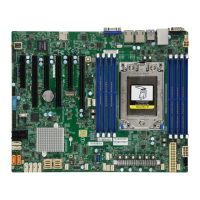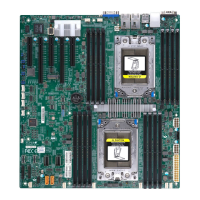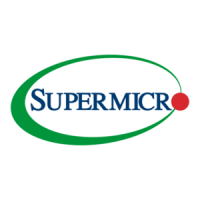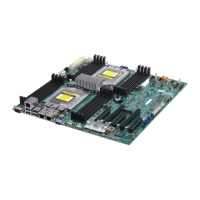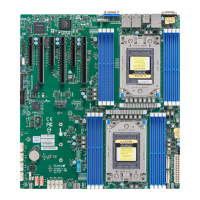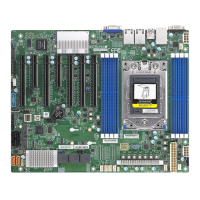Chapter 3: Troubleshooting
55
Question: How do I update my BIOS?
Answer: It is recommended that you do not upgrade your BIOS if you are not experiencing
any problems with your system. Updated BIOS les are located on our website at http://www.
supermicro.com. Please check our BIOS warning message and the information on how to
update your BIOS on our website. Select your motherboard model and download the BIOS
le to your computer. Also, check the current BIOS revision to make sure that it is newer
than your BIOS before downloading. You can choose from the zip le and the .exe le. If
you choose the zip BIOS le, please unzip the BIOS le onto a bootable USB device. Run
the batch le using the format FLASH.BAT lename.rom from your bootable USB device to
ash the BIOS. Then, your system will automatically reboot.
Question: Why can't I turn o the power using the momentary power on/o switch?
Answer: The instant power o function is controlled in BIOS by the Power Button Mode
setting. When the On/O feature is enabled, the motherboard will have instant o capabilities
as long as the BIOS has control of the system. When the Standby or Suspend feature is
enabled or when the BIOS is not in control such as during memory count (the rst screen
that appears when the system is turned on), the momentary on/o switch must be held for
more than four seconds to shutdown the system. This feature is required to implement the
ACPI features on the motherboard.
Question: For the AMD EPYC platform, we found that the Windows Server 2012/2016
OS would not install properly. It however works ne with Linux OS, any suggestions?
Answer: This issue is due to Windows server OS' compatibility with the virtualization function,
we suggest to disable IOMMU (Input/Output Memory Management Unit) before installing the
Windows Server OS. After installing the OS and hot x update is nished, then you could
enable the IOMMU in BIOS.
BIOS >> Advanced >> NB Conguration >> IOMMU >> Change from Auto to Disabled.
Microsoft KB: 4022723
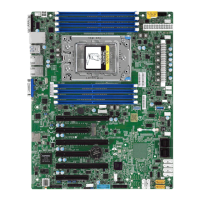
